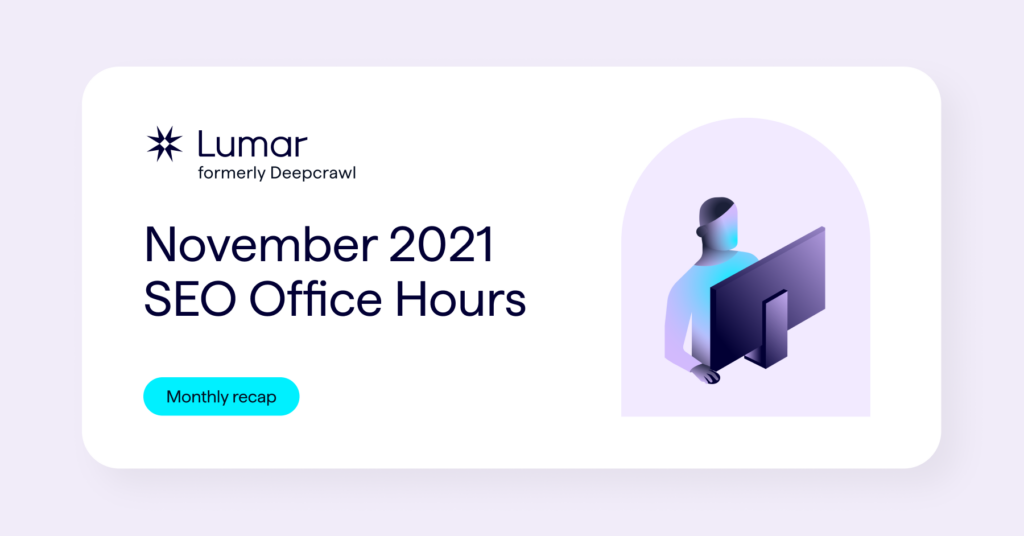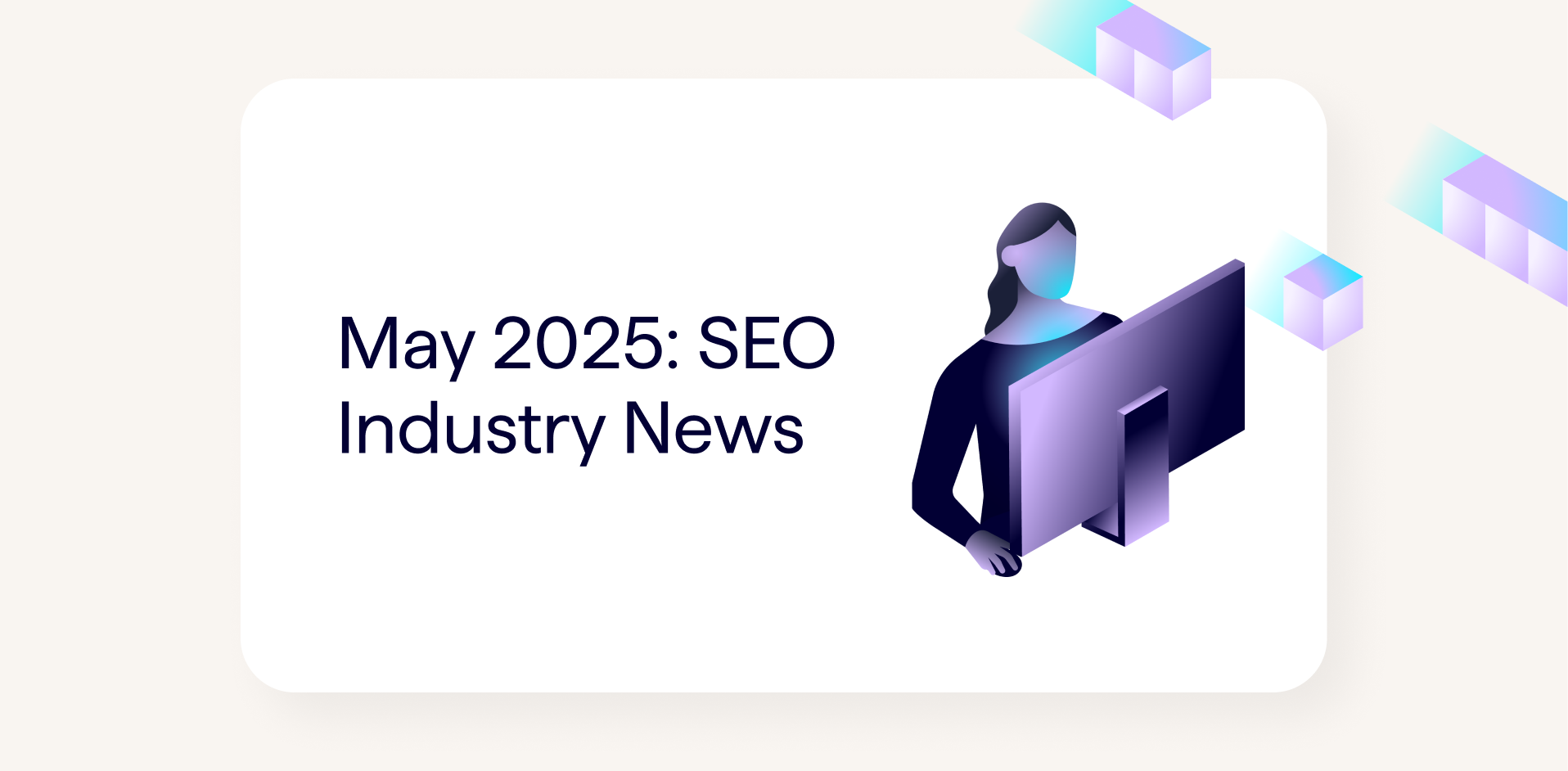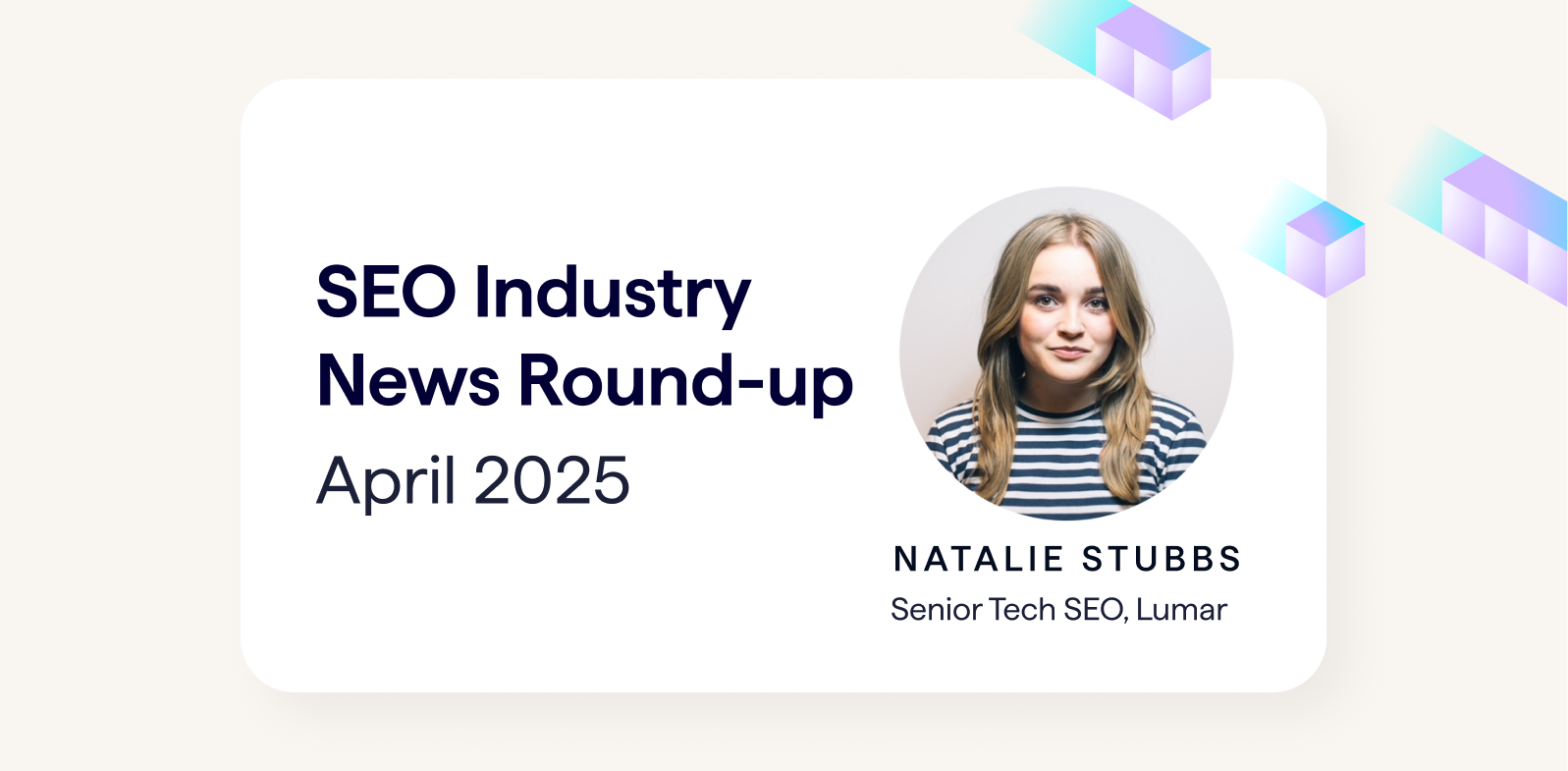Our team here at Lumar (formerly Deepcrawl) regularly attends Google Search Central‘s SEO Office Hours events. Even better: to help SEOs and marketers stay informed on the latest developments in Google search and find up-to-date, straight-from-the-source advice from Google’s search experts, we’re regularly sharing our notes from the latest SEO Office Hours to provide key takeaways from these sessions that all SEO professionals should know.
Read on for our top takeaways from the most recent SEO Office Hours sessions:
Social media metrics typically don’t impact search rankings
SEO Office Hours host John Mueller confirmed in this session that social media pages are typically viewed by search engines in the same way as regular web pages. For the most part, Google doesn’t take into account metrics such as likes or follower counts when it comes to ranking these URLs.
Skip to this part of the Office Hours discussion here:
Continuous scrolling in SERPs won’t change how impressions are counted in Google Search Console
Google’s new “continuous scroll” feature that is currently being rolled out for its mobile, English-language SERPs will continue to load results in sets of 10, so impressions in GSC will continue to be counted in the same way as before.
For example, when a user scrolls down and organic results 11-20 load dynamically in the viewport, those pages will get an impression in the same way as if the user had clicked through to page 2. If anything, site owners might see a slight increase in impressions as continuous scroll makes it easier for users to view more results, although this could in turn have a negative impact on CTR.
Continuous scrolling will initially only impact the top 40 search results in Google
Continuous scrolling in Google search results is being rolled out on mobile English-language results in the US. For now, it will work on the first four pages only (that is the top 40 results). Users will need to manually click a ‘load more’-style button in order to see URLs that rank in positions after page 4.
SEO improvements based on CWV metrics take about a month to show results
Google’s Core Web Vitals look at data that is delayed by around 28 days. This means that any significant page speed improvements you make on your website will typically take about a month to show up in the search results.
How to encourage Google to recrawl ‘back in stock’ product pages with internal linking
For eCommerce websites, it’s recommended to keep URLs live when a product temporarily goes out of stock. To encourage re-crawling by search engines once the item is back in stock, John suggests only temporarily removing internal links to the product page while the product is out of stock and then re-linking to it once the item is back. Deliberate internal linking (such as including internal links from the homepage) can give Google the best opportunity of finding and recrawling the page quickly.
Merchant Center feeds can help eCommerce sites keep Google current when items go out of stock
Creating a Google Merchant Center feed is also recommended for e-commerce sites that have items regularly going in and out of stock. This helps Google stay up-to-date by sending signals around product status and means that Google doesn’t need to depend on recrawling your webpages to detect and reflect updates to your product availability.
Internal links coming from the homepage can be an indication of content importance
Google spreads external link value through your internal linking structure, so internal links coming from the homepage can be an indicator to Google of relative importance for a given page. These pages may therefore be given a little more weight in the search results, although it’s not guaranteed that rankings will improve.
To better control page indexing, use ‘noindex’ on pages rather than ‘nofollow’ tags on internal links
Adding rel=”nofollow” tags to internal links is not recommended as a way to control indexing. Instead, John suggests adding noindex tags to pages that you don’t want indexed, or removing internal links to them altogether.
It should now be easier to experiment with page title generation
As of Summer 2021, page titles are no longer tied to individual queries but instead are tied to the page itself. With this in mind, John recommends trying out different approaches for title tags and rolling out the successful formula across similar page types.
Image sitemaps can be useful for sites that use lazy loading
When “lazy loading” images on a page in a way that doesn’t include defined image elements, it’s recommended to have backup in the form of structured data or an image sitemap. That way, Google will know to associate those images with the page even before they’re loaded.
For more key takeaways from Google’s SEO Office Hours, visit the Lumar (formerly Deepcrawl) Hangout Library.



